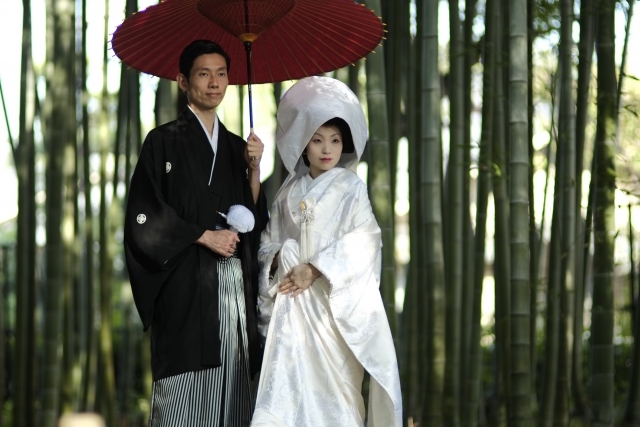
芸
2024-06-11
A wedding in traditional Japanese attire, with the beautiful ceremony of kagami biraki
No items found.
Today, I had my first meeting with a wedding planner in Kanagawa. When I mentioned the keyword “Japanese-style residence with a Japanese garden,” they were very interested. I quickly received a response via email and got the opportunity to have an online conversation.
Recently, it seems that many couples are choosing to have unique weddings. If you search for “kominka wedding,” you’ll find many interesting articles.
Diversity and uniqueness. I intuitively felt that there might be couples who want to have a wedding like in the old days. While luxurious wedding venues and simple old houses are both great, a Japanese-style residence with a Japanese garden offers elegance and tranquility with a sense of everyday life. I am confident that we can propose a guesthouse wedding at a Japanese-style residence with a private garden as one of the options.
The wedding planner was very interested, and they decided to come for a tour next week.
A Japanese-style wedding. Although we rarely have the opportunity to wear kimonos nowadays, wearing a kimono is something special for Japanese people. The feeling you get while wearing one is also different. Wedding dresses are wonderful, but kimonos are also great, aren’t they?

A shiromuku kimono, much like a pure white wedding dress, symbolizes innocence and purity, representing a new life upon marriage, and taking on the colors of the new family.
The headpiece worn by the bride in photos is called a “watabōshi.” It is worn during the ceremony and removed for the reception. The purpose of the watabōshi during the ceremony is to hide the bride’s face, similar to the veil of a wedding dress. It is believed to protect the bride from evil spirits and malevolence, and it also symbolizes the bride’s modesty.
In the past (perhaps during my parents’ generation?), it was common to be photographed in this style as below.
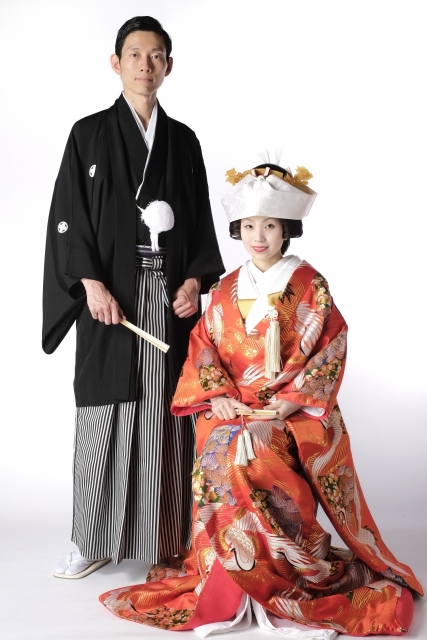
After the shiromuku and wataboshi, the bride changes into an uchikake and wears a tsunokakushi. The “tsuno” (horns) symbolize anger, and hiding them represents becoming a gentle and obedient wife. The ideal of a gentle wife is the reason for the tsunokakushi. This reminds me of the “good wife, wise mother” concept that I learned at the women’s college I once attended.
The luxurious colored uchikake is also very attractive.
During today’s meeting, we discussed a customer who wants to have a kagami biraki ceremony. There is a sake brewery in the neighborhood that has been in operation for over 100 years, and their sake is incredibly delicious. At my wedding, we placed small wine bottles with the guests’ names on the tables as decorations and souvenirs for them to take home.
Since this will be a Japanese-style wedding, I was considering incorporating sake in a similar manner. However, the idea of kagami biraki is a great option too.
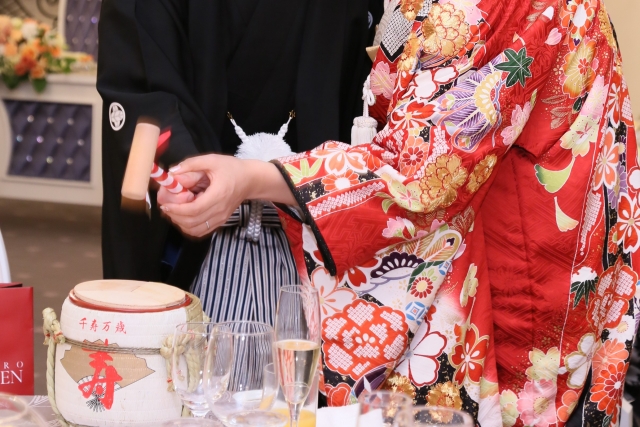
When I hear “kagami biraki,” it reminds me of the New Year’s mochi.
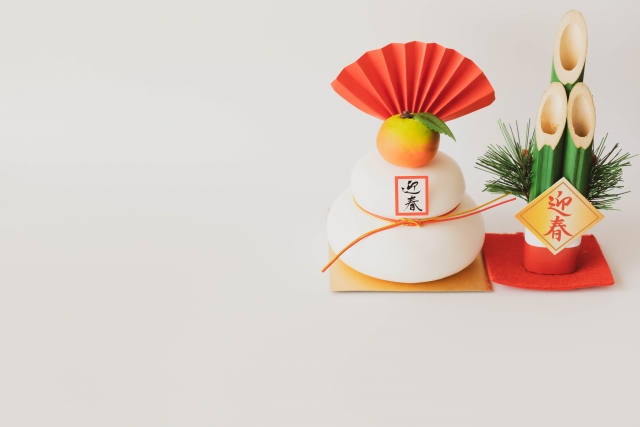
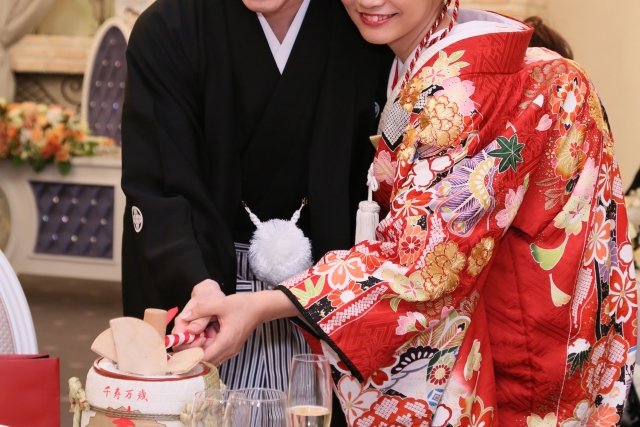
During the New Year, it is a traditional Japanese custom to take down the kagami mochi, which has been offered to the gods, and break it to eat on January 11th, though the exact date varies by region. This is called kagami biraki.
Similarly, at a wedding, the lid of a round sake barrel is broken open. Both the New Year’s mochi and the lid of the wedding sake barrel are round.
The round shape refers to the shape of a mirror. The “Three Sacred Treasures” are the sword “Kusanagi no Tsurugi,” the jewel “Yasakani no Magatama,” and the mirror “Yata no Kagami,” which have been passed down through the Imperial Family. The round shape of the mirror has become the round shape of the mochi and the lid of the sake barrel, and breaking these is referred to as kagami biraki.
The term “breaking” is considered inauspicious, so instead of saying “break,” we say “open.” The term “open” is very auspicious, as in the expression “opening luck.”
The mirror reflects light and shines, so it is believed that the soul of Amaterasu Omikami, the sun goddess, resides in this mirror. The Yata no Kagami is enshrined as the sacred body of Amaterasu Omikami.
The New Year’s kagami mochi is also believed to house the spirit of the god, and breaking (kagami biraki) and eating it is said to mean receiving the god’s soul and the life force for the year.
Similarly, the kagami biraki at a wedding involves receiving the power of the gods by consuming sake made from rice, just like the mochi. It is a ceremony to celebrate a new beginning and a fresh start for everyone.
I didn’t know that kagami biraki had such a meaning.
A wedding celebrates the couple’s new journey, wishing for good fortune and connecting to a new life.
It might be interesting to recreate an old-fashioned wedding at a Japanese-style residence with a garden. I can imagine a scene where food is arranged on a traditional tray with legs, and both families face each other while eating. A banquet held in a solemn atmosphere.
A Japanese wedding. What kind of wedding do you envision?